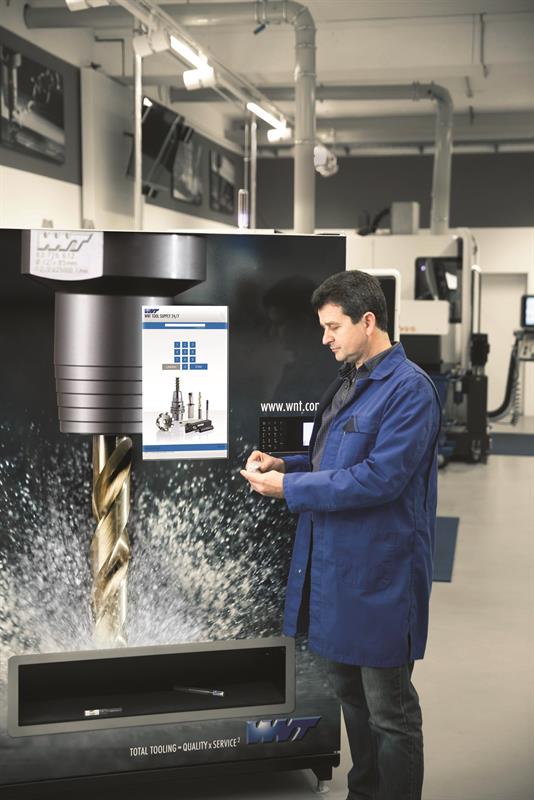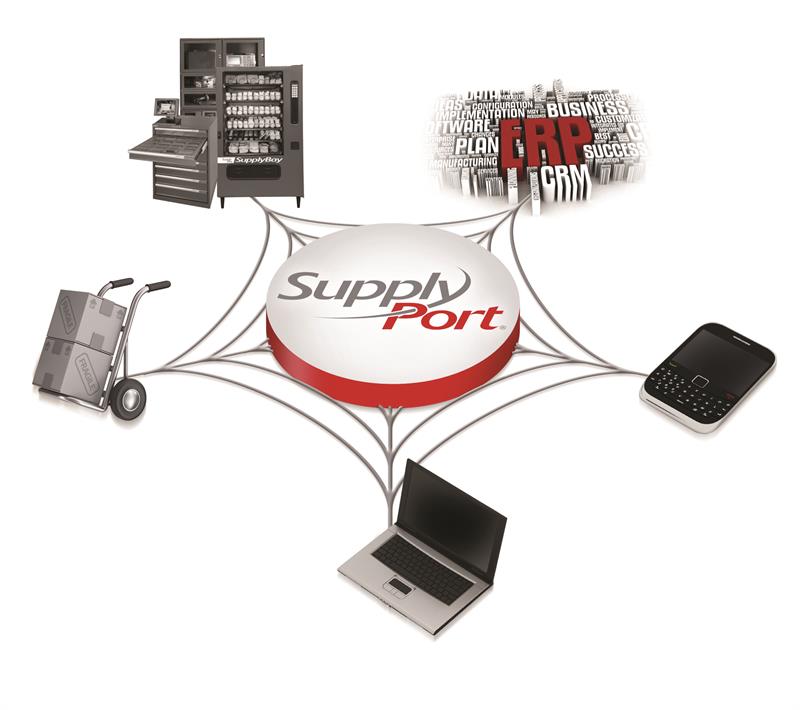Tool vending machines hold tools on a customer’s site until they are needed. For regular buyers, they offer several advantages over postal delivery: first, the tools are ready and waiting on site, and second, most suppliers offer tools for them as consignment stock, meaning they don’t have to be paid for until they are taken out. For tooling suppliers – who usually aim to support most metalcutting applications – the units help them get closer to customers, and help better fend off the competition.
Vending machines come in many shapes and sizes, ranging roughly around the size of a fizzy drinks machine. Those formats include familiar screw-type units used for snack food, such as Dormer Pramet’s ProLog SupplyBay system (0870 850 4466) offering 60 locations and 6-30 items per spiral. Alternatively, there’s rotating carousels, the same format used to sell sandwiches, for example in MMC Hardmetal’s AutoCrib range (01827 312312) – the entry-level module offers 628 bins. In addition to its own carousel, MSC Industrial Supply’s ControlPoint range (0121 505 9500) offers lockers for booking out/in larger items, such as gauges or assembly tools. Many other brands (including Guhring, 0121 749 5544, Dormer Pramet, which markets a small unit, SupplyPod and MSC Industrial, among others) employ cabinets resembling portable tool chests, with racks of drawers containing a number of internal bins, each of which can be individually electronically opened. The drawers often come in different depths, and are modular, as are the bins that fit in them, so all kinds of tooling can be stored.

WNT’s new Tool-O-Mat vending machine
There are as many types of purchase contracts as there are machine types. At one end of the continuum, WNT UK (0114 249 6249) will provide its new Tool-O-Mat vending machine free of charge to customers that spend significant quantities (£1,500/month for the smaller TOM 60 unit; £5,000/month for the TOM 840). Other vendors, such as Guhring, may sell the machine outright, so users can put in any supplier’s (or suppliers’) tooling, or arrange a leasing arrangement. For larger contracts still, Guhring and MSC Industrial offer the possibility of an on-site dedicated tool manager.
Instead of the snack machine’s rudimentary alphanumeric readout, tool vending machines’ interface is more sophisticated, with a colour display, often touchscreen, that provides catalogue and technical information about the stock, potentially including pictures, to help users choose the right tool, sight unseen.
All of these tool vending machines, regardless of format, keep a close eye on the comings and goings of their contents. To take out a tool, every user needs to use their unique key (a pin code or swipe card) to operate the machine. Most units go beyond that, allowing users to tag a tool removal (purchase) to one or multiple jobs or cost centres. These they enter, perhaps using a barcode reader, before the tool vend is complete. Purchases are automatically logged by the machine’s computer brain. Records of items taken out of the machine, by whom, when and for why are sent back to the supplier by means that include mobile telephony (WNT) and the internet (MSC Industrial, Guhring); for this purpose, many vending machines require not only power but also a network cable.
The main benefit of tool vending machines is automated reordering; as the machine runs low, it will send a restocking order to the supplier (or suppliers, potentially, with some systems). That prevents workers having to face the unpleasant surprise of no tool for a job that can’t wait, and avoids the need for someone to do a manual stock audit to reach the same conclusion.
Just having confidence that the tools are available when needed may reduce tool spend; MSC Industrial reports that its ControlPoint customers typically reduce consumption by 25% or more because of better inventory control. WNT says that its machines, which it would expect to hold about three to four months’ worth of stock, would be restocked fortnightly or monthly by a technical sales engineer.
A second major benefit is usage reporting. By tracking who is using what on the shopfloor, a tool vending machine holds up a mirror to production. Managers can use this information to assess worker, machine and process productivity, by comparing jobs that seem similar but that consume different quantities of tools. Perhaps there is a problem with the way a process has been designed, with a machine set-up, or with a worker who habitually takes more tools than needed.
Since tooling spend is one of the biggest outgoings faced by a metalcutting manufacturer, the value of this information is high. Thanks to advanced software provided by tool vending machine suppliers, tool consumption data, which is available remotely, can be plugged into management reports to gain a much wider picture of production.

Dormer Pramet offers Supply Pro software (www.supplypro.com) to link tool vending machines to a company’s ERP systems
WNT’s Tool-O-Mat offers statistical analysis of tool consumption and cost centre reports. MMC Hardmetal’s AutoCrib system offers a choice of up to 200 standard reports to help identify trends, waste and inefficiency in tooling consumption. Dormer Pramet’s Supply Port schedules regular reports for sending to management, reports data at different levels (at item, plant and enterprise levels), automatically manages replenishment and reordering according to customised parameters and interfaces with ERP systems. Guhring Tool Management Software, developed in-house, is included in the price of the vending machine. It consists of an SQL database that can include tool wear data measurement.
The extent of the intelligence that comes out of the system probably depends on how much time is spent on setting it up. Guhring’s TM Multi-Vend tool dispensing system is part of its wider tool management service package that covers process planning, logistics, tool application, tool maintenance and process optimisation, available as consultancy services.
Guhring says it focuses on not only direct tooling costs, but also the indirect costs that are much harder to measure; for example, how the time spent looking for a tool in a poorly organised store reduces machine availability. The solution it proposes to overcome these issues is to become a company’s single point of contact for all tooling needs, not only providing storage and supply (extending even to ordering competitors’ products) but also tool presetting, repair and applications engineering.
TEXT BOX
A retrofit alternative for manual tool stores
To help take advantage of the benefits of tool vending machines without requiring (much) investment in machinery, some suppliers also offer inventory management systems to manage a manual stores area. MMC Hardmetal’s (01827 312312) Tool Crib Station accepts input via keypad or touchscreen, to help keep track of a manual tool store. Dormer Pramet’s (0870 850 4466) ProLog SupplyPad system, consisting of software running on a tablet computer, manages tools tagged with an RFID chip or barcode.
This article was first published in the December 2016 issue of Machinery magazine.




